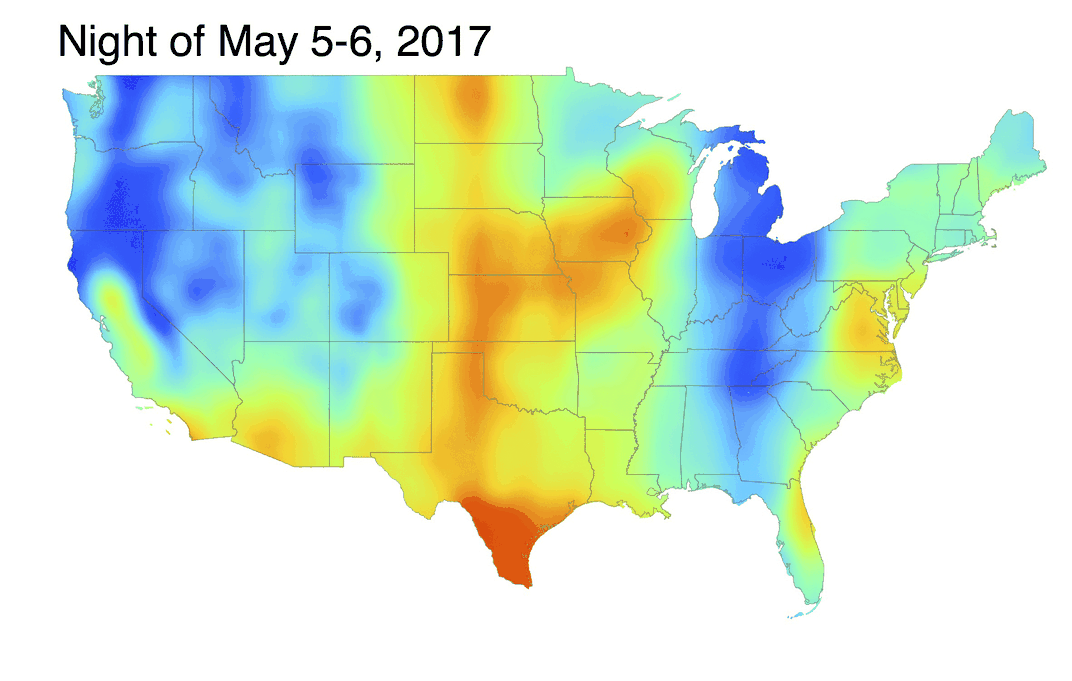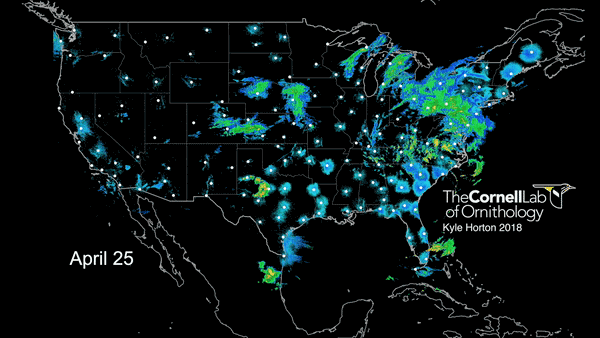Scientists Can Predict When Birds Will Migrate Up to a Week in Advance
A new forecasting model using years of bird migration data and weather radar could help us protect migrating birds from harm
/https://tf-cmsv2-smithsonianmag-media.s3.amazonaws.com/filer/90/47/9047416e-2fd8-45fd-a53b-05247f9c13ce/baltimore_oriole.jpeg)
What makes birds migrate when they do? This is one of biology’s most enduring questions, pondered since the age of Aristotle. By now, scientists know migration is influenced by a host of factors, both internal and external, from weather to daylight to body clocks. But how these factors work together to predict when any given bird species will begin their own flight is still largely a mystery.
A new kind of model may, if not solve the mystery, at least give scientists a tool to predict migration accurately.
“We developed a bird migration forecast system for the entire continental U.S., and it’s accurate several days in advance,” says Benjamin Van Doren, a PhD candidate at the University of Oxford, who led the research. “This allows us to predict fairly accurately the number of birds that are migrating at night in the spring.”
Van Doren and his team at both Oxford and Cornell University fed several decades of spring bird migration data and Doppler radar data from the National Weather Service to a machine learning model, teaching it to recognize various atmospheric conditions associated with migration. The strongest factor was temperature—warmer weather brings out leaves and bugs, food for many species of migratory birds. Other factors, such as wind, are also important. A bird that leaves in overly windy conditions could be blown off course, potentially into dangerous territory like open ocean. During peak migration in May, about 420 million birds travel overhead at night; the model can predict their departure up to seven days in advance.
The research was published today in the journal Science.
Predicting bird migration could be extremely useful for conservation purposes, Van Doren says. Birds don’t tend to migrate in a steady trickle, he explains, but rather in dramatic waves or pulses. If those waves were known in advance, people could take measures to help keep migrating birds from harm. This might include turning off lights in buildings prone to bird collision or powering down wind turbines while birds are passing.
“If we can identify the small number of nights when these huge pulses are occurring we can have people take action,” Van Doren says.

The forecast could also be useful to military or commercial aviation interests to help avoid bird strikes. It’s also, well, cool, and Van Doren hopes that it will help engage the public in the plight of birds and of nature in general.
“I see birds as really great representatives of the natural world because they are visible and charismatic organisms, in particular migratory birds,” he says.
The next steps for Van Doren and his team will be tailoring migration forecasts to different stakeholders—migration forecasts for low-flying military planes, say, or for building owners looking to avoid collisions. This will involve teaching the model to provide more specificity in terms of altitude. The team is also looking at adding more and different potential migration factors to the data, to make it more accurate.
To be able to see birds moving across the U.S. at such scales is “a pretty powerful thing,” says Pete Marra, director of the Smithsonian Migratory Bird Center.
Since the model helps scientists understand how weather influences migration patterns, it has the potential to help them predict climate change’s impact on wildlife, Marra says.
“Before we can understand how to predict how animals will change in response to climate change, we need to understand how animals respond to weather in general,” he says. “So this is a really important first step.”

Right now, the public can see bird migration maps in action on Cornell’s Birdcast website. The site shows both three-day advance forecasts and real-time bird movements across the U.S., updated every six hours.
Though Van Doren is now based in the UK, he was in New York this week, helping monitor the September 11th Tribute in Light, the annual memorial in which two dazzling columns of light stand in for the destroyed Twin Towers. The columns are so powerful they can be seen from several states around, and this brightness can pose a problem for migrating birds, who can become disoriented and pulled off course. New York City Audubon has come up with a solution, bringing in trained volunteers to monitor the density of birds flying through the light beams. If the densities become too high, the tribute organizers will turn off the lights for long enough to allow the birds to disperse.
Luckily, Van Doren says, this year’s tribute turned out to be a low migration night, so the organizers didn’t have to do much interrupting. He hopes his work will help other people and organizations to become similarly bird-aware.
“Birds really connect people and they connect continents,” Van Doren says. “Conserving birds that migrate is really an effort that requires the cooperation of people across the world.”
/https://tf-cmsv2-smithsonianmag-media.s3.amazonaws.com/accounts/headshot/matchar.png)
/https://tf-cmsv2-smithsonianmag-media.s3.amazonaws.com/accounts/headshot/matchar.png)